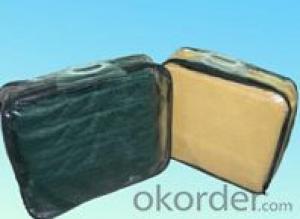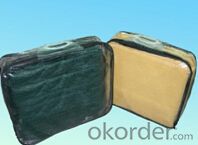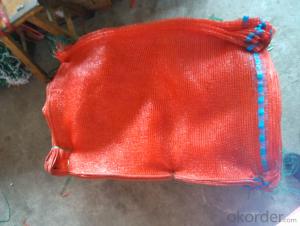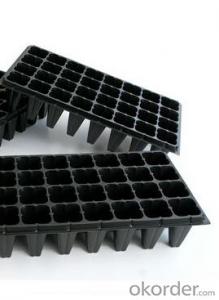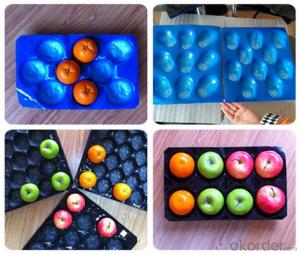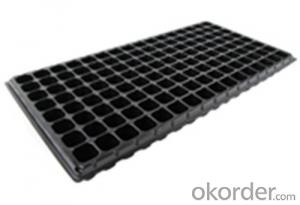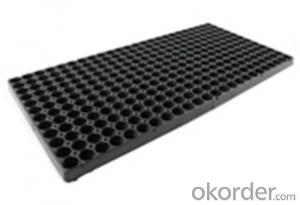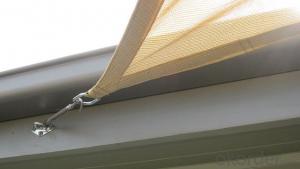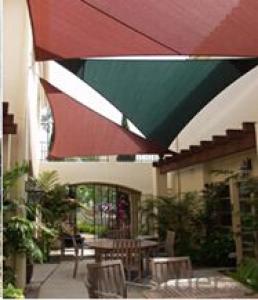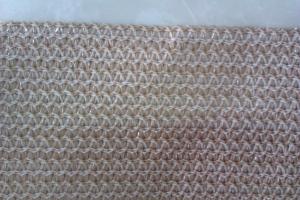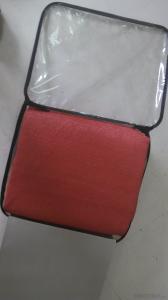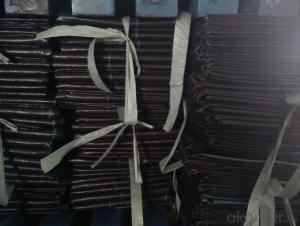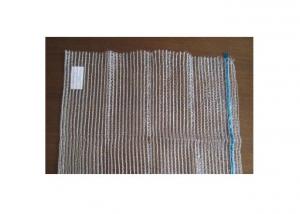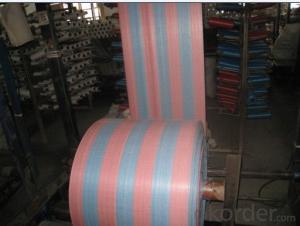Shade Sail water-proof cloth sail
- Loading Port:
- Ningbo
- Payment Terms:
- TT OR LC
- Min Order Qty:
- -
- Supply Capability:
- 50000pcs pc/month
OKorder Service Pledge
OKorder Financial Service
You Might Also Like
Shade Sail water-proof cloth sail 160GSM
Net weight: 160g/m2--320g/m2
Size: 3x3m, 3.6x3.6m 3x3m, 3x3x3m,5x5m,5x5x5m and so on UV block: 85-95%
Material: 100% virgin HDPE
Using life: 5 ~10 years Gurantee
Export market: Europe ,America,Japan, the Middle East ,Africa
Shape: Square, Triangle , Rectangle
Packaging & DeliveryPackaging Detail: Each piece of sail will be put into a pvc hadle bag with a color label inside, seveal pcs packaging into a paper carton with shipping mark.
Product Description of shade sail shade cloth:
Shade Sails protect and shade you from the severe effects of the sun's heay & UV rays. Some areas of the world call them Sun Sails.
They make a beautiful additions to your patio, backyard, or other outdoor areas.
Flying Sails is the perfect alternative to a traditional pergola, umbrella or covered porch. Floating and curvaceous, the make an attractive addition to any property, and with the right design,
they can enhance the appeal of the entertaining outdoor areas..
The perimeter of each sail is designed with a gentle cantenary curve inwards towards the center of the sail to control the fabric tension. Shade sails have reinforced webbing around the perimeter and marine stainless steel D or "Delta" rings at each corner. When properly tensioned, shade sail fabric will not wrinkle, sag, or flap in the wind.
- Q: How long do plants typically stay in nursery trays before being transplanted?
- Plants typically stay in nursery trays for about 6-8 weeks before being transplanted.
- Q: What are the alternatives to plastic film used in agriculture?
- <p>Yes, there are several alternative materials to agricultural plastic film. These include biodegradable films made from plant-based materials like starch, cellulose, and polylactic acid (PLA). Additionally, paper-based mulches and natural fiber mats can serve as alternatives. Some farmers also use agrotextiles, which are permeable fabrics that allow air and water to pass through while protecting crops from pests. Another option is the use of silage film, which is made from a blend of polymers and is designed for specific agricultural applications. Research is ongoing to develop more sustainable and cost-effective alternatives to reduce the environmental impact of plastic film usage in agriculture.</p>
- Q: What are the different types of agricultural plastic films for silage?
- There are several types of agricultural plastic films used for silage, including oxygen barrier films, stretch films, and UV-stabilized films. Oxygen barrier films are designed to prevent oxygen penetration and maintain better quality silage. Stretch films are used to tightly wrap bales or silage bags, providing a secure and compact seal. UV-stabilized films are resistant to sunlight degradation and are commonly used for outdoor storage of silage.
- Q: How are plastics separated from other materials such as glass, metal and paper at the recycling plant? please help! x
- hard stuff. search on yahoo or google. that can help!
- Q: Are nursery trays suitable for succulent arrangements?
- Yes, nursery trays can be suitable for succulent arrangements as they provide a convenient and efficient way to grow and display multiple succulents in a compact space. The trays often come with drainage holes, which are crucial for preventing water accumulation and ensuring proper succulent growth. Additionally, nursery trays are usually made of durable materials that can withstand the weight and unique needs of succulents. However, it is essential to ensure that the tray is well-draining and has enough space for each succulent to thrive individually.
- Q: I'm Really Thinking About converting to tampons and from what my friends tell me that the plastic ones are easier but how does the plastic tampons absorb the blood like where does the blood goes..I'm sorry if i'm being disgusting about this :/
- Plastic tampons are actually referring to the applicator, so a plastic tampon is the same cotton wool type inside to absorb the blood but it is contained in a plastic casing which you use to insert it and then remove the plastic applicator. You can also get cardboard applicators. I'm afraid that plastic works best for some, cardboard for others and so you really need to experiment with both to find which works best for you. Maybe you can borrow a plastic one from a friend to try out first? I actually never made the transition to tampons, I think pads are much more comfortable and I don't like the idea of inserting something like that in my vagina and then walking around all day with it up there. If you wear a tampon, make sure you don't wear it 24hrs a day and consider switching to a pad on very hot days. Tampons can cause toxic shock syndrome, it's rare, but you really don't want it and wearing them constantly or in hot weather increases the probability of this.
- Q: Can ground cover be used in both residential and commercial landscapes?
- Yes, ground cover can be used in both residential and commercial landscapes. Ground cover plants are versatile and can be used to provide erosion control, weed suppression, and aesthetic appeal in various types of outdoor spaces, including residential gardens, parks, office complexes, and shopping centers. They offer a practical and low-maintenance solution for enhancing the appearance and functionality of both residential and commercial landscapes.
- Q: Are agricultural plastic products used in horticulture?
- Yes, agricultural plastic products are commonly used in horticulture. These products serve various purposes such as greenhouse covers, mulch films, nursery pots, and irrigation systems. They help in regulating temperature, retaining moisture, protecting plants from pests and weeds, and improving overall crop yield in horticultural practices.
- Q: why is plastic able to be stretched?
- I don't think it can be stretched all that well ps I didn't really understand your question, I thought you meant why is plastic elastic. As far as plastic being able to be stretched without breaking, almost all materials can do this. For example, if you pull on metal hard enough it will stretch a little before it breaks. However, like plastic it will be permanently deformed.
- Q: Can ground cover plants be used to prevent soil erosion in vegetable gardens?
- Yes, ground cover plants can be used to prevent soil erosion in vegetable gardens. They help to stabilize the soil, reducing the impact of heavy rain and preventing the loss of topsoil. Additionally, ground covers act as a barrier against wind erosion, maintaining the integrity of the garden bed and protecting the roots of vegetable plants.
Send your message to us
Shade Sail water-proof cloth sail
- Loading Port:
- Ningbo
- Payment Terms:
- TT OR LC
- Min Order Qty:
- -
- Supply Capability:
- 50000pcs pc/month
OKorder Service Pledge
OKorder Financial Service
Similar products
Hot products
Hot Searches
Related keywords

